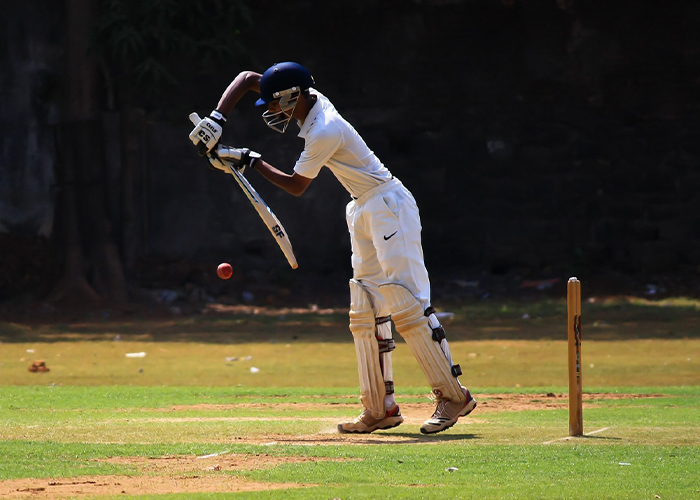Yoga for Harmony and Peace
YOGA FOR HARMONY AND PEACE
Vikarokti:
- The purpose of the information available in the Common Yoga Protocol (Protocol) is to spread general awareness about yoga among the people of the lower world community so that people can achieve harmony and peace through yoga. This Yoga Guide is not a replacement for the facts, methods and instructions mentioned and the medical affiliation of the practitioner. In any particular case, if you need medical attention or diagnosis, then you should consult your health expert before practicing yoga. The writer is not liable for any physical damage or loss as a result of yoga practice.
1. invocation
The practice of yoga should be started with an attitude of prayer. By doing this, there will be maximum benefit from yoga practice.
Om Sangachchadhvam Samvaddhvam
sam wo mnasi jantam
deva bhagam yatha purve
sjanana upasate
Let Sam know your minds. The gods worship their share as they knew it in the past. That is, let us all walk together with love, speak together and all become wise. Let us follow all our duties like our forefathers.
2. Sadilaj / Chalana Kriyas / Relaxation exercises
Sadilaj / Chalana Kriyas / Relaxation exercises help in increasing the subtle circulation in the body. This exercise can be done standing or sitting.
(a) Cervical movement (Cervical strength developer)
Physiological status: homeostasis
practice method
First phase: (Forward and backward bending/stretching)
* Stand with feet 2-3 inches apart. Keep the hands straight beside the body.
* This practice is homeostasis. It is also called Tadasana.
* Keep the palms on the waist during the exercise.
* While exhaling, slowly tilt the head forward and try to touch the chin to the chest.
* Inhale as far back as the head
* If you can take it, take it back.
* This completes one cycle.
Give this method more.
Repeat times.
Phase II: (Bending/stretching to the right and left)
* While exhaling, slowly tilt the head to the right: Bring the ear as close to the shoulder as possible.
* Keep in mind that the shoulders should not be raised upwards.
* While inhaling, bring the torso to normal position. Similarly, while exhaling, tilt the head to the left.
* While inhaling, bring the head to normal position.
* It has come full circle. Repeat this method twice.
Step 3: (Rotating Right and Left)
* Keep the head straight.
* Exhaling, slowly turn the head to the right so that the chin and shoulders are in a straight line.
* While inhaling, bring the head to normal position.
* Similarly, while exhaling, turn the arrow to the left.
* Bring the head back to normal while inhaling.
* Get into position. It has come full circle. Repeat this method twice.
Stage IV: Cervical Rotation
* While exhaling, tilt the head forward and touch the chin to the chest.
* While inhaling, slowly rotate the head in the clockwise direction and exhale while bringing it back.
* Thus rotate the cervix completely once.
* Then the cervix in the anti-clockwise direction Rotate it.
* Take the neck back while inhaling and take it back while exhaling
* Come on It has come full circle. Repeat this method twice.
Note:
* The cervix should be rotated as much as possible and should not be stretched too much.
* The shoulders should be kept relaxed and stable.
* Feel the stretch around the neck and keep the joints and muscles of the neck relaxed.
* It can also be practiced sitting on a chair.
* Those who have pain in the neck, they should do this exercise slowly, especially they should
Take it back as far as is comfortable.
* Older people and people suffering from chronic cervical spondylitis should not do this exercise.
(b) Wing Operations:
Body Position: Homestand (Awake State)
Step 1: Shoulder Stretch
Practice Method:
* Join the feet together and keep the body straight and keep the arms by the side of the body.
* Taking the breath in, raise both your arms above the head from the side.
* Palms should be in the upward direction while exhaling
* Bring the arms down. Keep both the palms open by joining the fingers.
Phase: Shoulder Chakra (Shoulder Movement)
* Stand up straight.
* Place the fingers of the left hand on the left shoulder and similarly place the fingers of the right hand on the right shoulder. Rotate both the elbows completely.
* Inhale and raise both the elbows upwards
* Go and bring it down while exhaling.
* Try to touch the elbows in front of the chest. Rotate by pulling the elbows backwards and bring the arms back to touch the body.
* Repeat this action from front to back (counter-clockwise) twice.
* From back to front (repeat the same action twice in the anti-clockwise direction. While inhaling, bring both the elbows up and while exhaling, bring them down.
Benefit:
* The bones, muscles, nerves of the neck and shoulders remain healthy by the practice of this compoundaction.
* This yoga practice cures cervical spondylosis and relieves obstructions in shoulder movement.
(c) lumbar movement
lumbar movement (lumbar strength developer) body position homeostatic (wake position)
Practice Method:
* Keep a distance of 2 to 3 feet between both the feet. Raise both the arms to the level of the shoulders, at this time both the palms are in parallel position.
* Be face to face with each other. While exhaling, turn the body to the left, so that the right palm comes to the * left shoulder while inhaling the breath. Touched.
* While exhaling, turn the body to the right, so that the left palm touches the right shoulder.
* While inhaling, come back to the previous position.
* This completes one cycle. Repeat this method two more times. Relax in the home state after the exercise.
Writer : Pramod Yadav
























